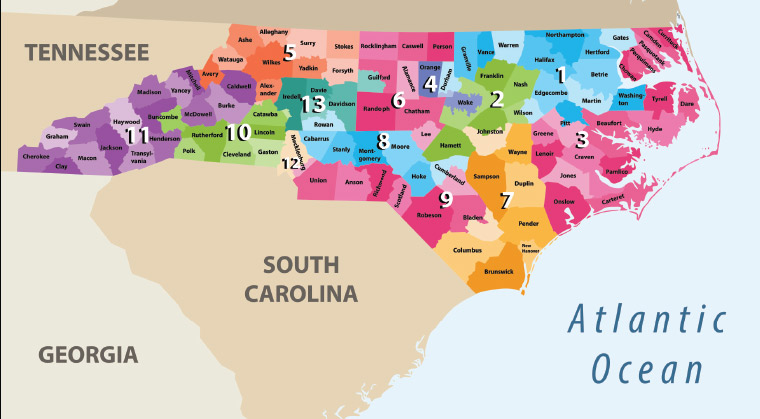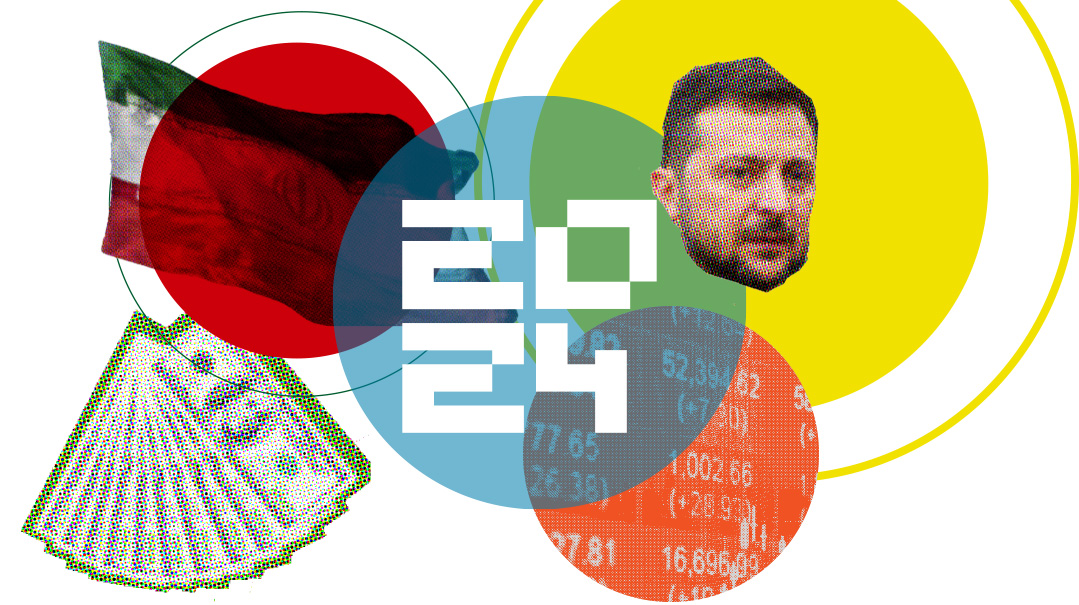How to Cut the Pie


For the first time, a federal court recently struck down a North Carolina redistricting plan, calling it partisan gerrymandering. That could change the way politicians draw the political maps.
Partisan gerrymandering is permitted; racial gerrymandering is not.
That had long been the rule, established in federal courts over the decades. But in January, a federal court struck down a North Carolina redistricting plan that it said had crossed the line: it was too partisan. The architects of the plan, Republican state legislators who had won back the General Assembly in 2011 after a long absence, made it clear they were drawing lines based on partisan considerations.
“I propose that we draw the map to give a partisan advantage to ten Republicans and three Democrats, because I do not believe it’s possible to draw a map with 11 Republicans and two Democrats,” said North Carolina assemblyman David Lewis, a Republican from Harnett County. “I think electing Republicans is better than electing Democrats, so I drew the map to help foster what I think is better for the country… We want to make clear that the extent that we are going to use political data in drawing this map. It is to gain partisan advantage on the map.”
The US Supreme Court put a stay on the lower court’s ruling and sent it back to the three-judge panel, questioning whether the plaintiffs had legal standing to bring the case — but did not rule on the redistricting itself. Early in September, the original three-judge panel determined there was insufficient time before the November election to redraw the map, leaving the electoral advantage to the North Carolina Republicans.
Welcome to the world of gerrymandering.
Every ten years, the United States conducts a census, and on the basis of the results, states are allotted a quota of lawmakers to the US House of Representatives. States are then divided into districts, and one representative is assigned to each district. So, for example, California, the most populous state, has 53 district representatives in the House, while Wyoming, the least populous state, has only one. (Representation in the Senate, by contrast, is not dependent on the size of the population; there are always two senators from each state, regardless of population.)
In 37 out of 50 states, politicians are authorized to draw the maps, while in 13 other states independent commissions do so. When Democrats and Republicans share power in a state, the districting is carried out in a bipartisan manner. But when on party controls the state legislature and the governor’s chair, as do the Republicans in 21 states, they have even more power to draw district lines. So in 2014, although some 44% of voters in Pennsylvania voted Democrat, a whopping 13 out of 18 districts are represented in Congress by Republicans. And in Ohio, 40% voted Democrat, but 12 out of 16 districts have Republican congressmen.
In other words, instead of voters choosing their representatives, the representatives choose their voters. It’s a striking curiosity of the complex American electoral system, and one that is regularly exploited by the party in power.
A Long History
Attempts to tailor district lines for political gain stretch back to the United States’ origins. In 1788, Patrick Henry, who opposed the new Constitution, tried to draw district lines to deny a seat in the first Congress to James Madison, the Constitution’s primary author. Henry ensured that Madison’s district was drawn to include counties politically opposed to Madison. The attempt failed, and Madison was elected.
The term gerrymandering traces its origins to 1812, when Massachusetts governor Elbridge Gerry signed a bill that redistricted Massachusetts to benefit his party. When mapped, one of the contorted districts in the Boston area was said to be shaped like the mythological salamander, leading a political columnist to form a portmanteau of that word and the governor’s name. In the ensuing 200 years, the practice has been enhanced with the aid of voting data that can dissect the map to the level of a single street in order to maximize the advantage.
Back to North Carolina and David Lewis. By law, it’s no crime to draw the maps to benefit one of the parties — however, when the redrawing of the lines can be traced to racial groups, it becomes problematic. North Carolina’s 12th District, which winds its way along a highway, includes the majority of the state’s black population, most of whom vote Democrat. It was on that basis that a federal court intervened several times in the past, ordering lawmakers to draw a new map, which they did. However, the new map is basically the same as the old one. As Lewis himself claimed, the aim was not to affect voters on the basis of race, but party.
The Supreme Court has ruled on partisan gerrymanders in the past, but it has always been hard to prove that the practice is strictly unconstitutional. Over the years, however, the courts have established a few guidelines, one of which is that each state district must contain roughly the same number of residents. There must also be territorial contiguity for districts, and communities must not be split, so as to ensure minority representation in Congress.
Big Impact
Professor Justin Levitt, an American constitutional law scholar and professor at Loyola Law School in Los Angeles, is a national expert on gerrymandering. In a phone interview, he said there was nothing strictly wrong about what Lewis did. “It’s more honest that way,” he said. “At least they’re not doing it under the table.”
Still, when lawmakers in power draw district lines, Levitt believes it’s a conflict of interest that corrupts the electoral process. “The story of North Carolina is the most obvious. When you count the votes in that state, whether in presidential or gubernatorial elections, the results are very close. In 2008, it was 50-50; in 2012, it was 51-49; and in 2016, 53-47. But in Congress, North Carolina has ten Republican representatives and only three Democrats.”
Levitt says state courts are also beginning to weigh in on the issue. In Pennsylvania and Florida, for instance, district maps have been ordered to be redrawn. “State courts are starting to take a more aggressive stance, but the judicial process is very slow and costly,” Levitt said.
Voters are also starting to wise up to the issue. In Michigan, for example, 400,000 people signed a petition demanding a vote on the way district lines are drawn.
“People understand that this impacts everything — schools, infrastructures, roads, transportation. It’s not always clear to everyone, but they’re starting to get it. And 400,000 signatures from both parties shows that people are angry. They understand that when you don’t play fair, in the end everyone suffers.”
(Originally featured in Mishpacha, Issue 729)
Oops! We could not locate your form.













